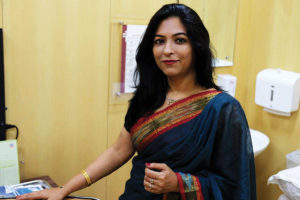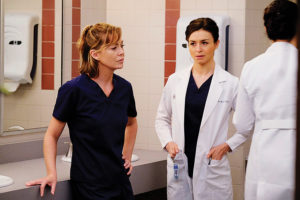The truth about doctors is stranger than the fictions we watch on TV, as these outpourings by a gynaecologist describe in evocative prose
Those who love watching hospital serials like ER, Scrubs, House and Grey’s Anatomy, this one’s for you. House of Doctors subtitled The Inside Story of a Medical School (Readomania), is another non-fiction title from the prolific pen of Dr Tripti Sharan. Her Chronicles of a Gynaecologist (Bloomsbury:
October 2016) was an astonishing collection of real-life stories about the patients she had come across. The anthology told you more about the beleaguered gender relations of this country than the horror stories of rape and abuse that the media puts out. Because even when no crime under Section this or that of IPC is committed, there is a lot going on — premarital sex, incest, repeated abortions —that melt the hardest heart and bring home the worst depredations of a patriarchal society.
In House of Doctors, the author recalls her medico days with humour, passion and insightfulness. She exudes an infections love for her profession and wants the world to know what goes into the making of a doctor. The blurb reads, “Beyond draconian examination and endless studies, it entails long duty hours with little reprieve, the pressure on the psyche to be always right, the mettle to survive in an environment full of patients, anxious caregivers, and a whole world of hope and anxiety.”
For youngsters still in the agonies of making a career choice, this book does not give a clear picture of the steps involved in medical education. However, they will certainly get an impression of what it’s like working in the wards as part of the process, better than any didactic definition. Take this passage:
I stared at the nurse. She looked back blankly. She was a senior nurse and had been working for more than ten years. And I, who had been here for just a couple of months had to finish the surgery! Tentatively I took the first stitch. There, it felt almost easy!
‘Am I doing it right?’ I looked hopefully at the nurse.

‘I can’t comment, Doctor.’ Came the brusque reply.
She didn’t want to take any responsibility in case of any eventuality. I hesitated but I knew we wouldn’t wait forever for my senior to return.
While in the non-medical world a postgraduate struts about with a sense of self-esteem, the author points out how doctors become the humblest link in the chain, as the hospital has no concern for your self-esteem or priorities. House surgeons work the hardest but get the least recognition. In short, they are treated like daughters-in-law in traditional households “and generally projected as hyper, flustered and confused girls.” In gynaecology, gender bias rules and they are often treated as nothing more than midwives.
It’s interesting that in the days when Sharan was studying (hopefully, things are changing) male medicos sneered during classes and treated the information about women’s plumbing as beneath their dignity to understand. In India, of course, obstetrics is primarily ‘manned’ by female doctors, mostly as a concession to a society that would not like women patients to be touched by male hands. Yet the transcendental act of assisting in the birth of a new human being does not seem to attract male students. Their loss, really.
The author rushes from one story to another, as if she can’t wait to share all the exciting things that happened to her with the world. Fortunately, no editor has tried to tame her enthusiasm or structure it in a sane sequence, which would have deprived the narrative of spontaneity. Compared to the streamlined style of multinational publishers, this creative outpouring is refreshing and memorable.
Take the description of hilarious situations that suddenly crop up. Since medicos are still in training at an age when parents typically want to marry off their daughters, they often send prospective in-laws incognito in the wards to check out the young doctor-in-the-making. They pose as patients or as relatives to get a good look at the potential groom or bride. The mother of a male medico even came to see the author to tell her to find a suitable doctor-match for her son. Often, marriages between two doctors are seen as a lucrative proposition, as a nursing home can be run profitably by the couple. The solution was to develop a thick skin and hope the parents would lay off.

When patients are victims of crime, it becomes the duty of doctors to make visits to the court to give testimony, a dreaded task given the strange ways of our system of jurisprudence. A doctor might be convinced a rape took place but if the supporting evidence is missing due to murder and decomposition of the body, the perpetrator can get away scot-free. And in the government hospital, a simple cupboard without a lock housed all the secret, legal documents.
The author does not shy away from describing the gory details of surgeries where the patient starts bleeding or there are unexpected developments like breech delivery, the stuff that most fans of hospital serials enjoy sitting in the comfort of their living rooms. The suspense builds up as she describes a pregnant woman who has a seizure or refuses to deliver if men are present. On a more curious note, you learn that the monsoon brings a downpour of deliveries as half of all Hindu weddings are often solemnised in winter. And you realise that doctors are not alone to be blamed for the rash of caesarians as young mothers shy away from the pains of labour.
The author is actually on a mission to make the general public realise that doctors are people with hearts, who come out of a tough training process and work under great constraints. Those who have spent days on a hospital bed do understand some of these nuances, and still have more regard for doctors than for the corporate hospitals which put such a big price on treatments. This book will certainly bridge the gap in understanding for those who pick it up.





